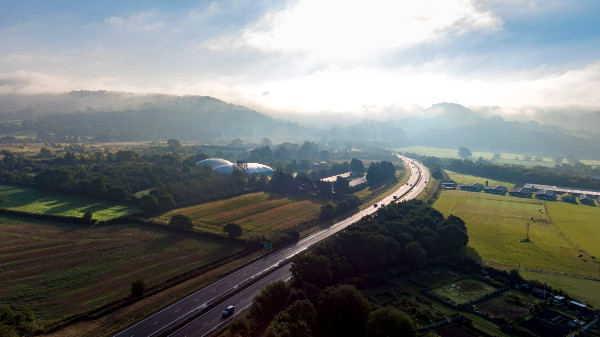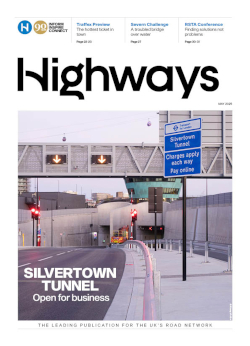Highways England has launched a new consultation on its £435m ‘landscape-led’ A417 Missing Link scheme.
The project will see the last stretch of three miles of single carriageway on the 31-mile A417/A419 route upgraded to dual carriageway.

The government-owned company said that as the scheme is in the Cotswold Area of Outstanding Natural Beauty the proposals aim to fit into and complement the character of the surrounding landscape.
It added that it had ‘worked closely with many stakeholders in developing proposals that reduce any impact on the environment and enhance areas for wildlife, archaeology, watercourses and public accessibility’.
Roads minister Baroness Vere said: ‘We are committed to making sure the community and all road users reap the benefits of any upgrade to the route – which will support the local economy, ease congestion and pollution and, of course, will factor in the area’s landscape, environment and history.’
Highways England said that as part of the scheme, it wants to create ‘a landscape-led highways scheme that will deliver a safe and resilient free-flowing road while conserving and enhancing the special character of the Cotswolds AONB; reconnecting landscape and ecology; bringing about landscape, wildlife and heritage benefits, including enhanced residents’ and visitors’ enjoyment of the area; improving quality of life for local communities; and contributing to the health of the economy and local businesses’.
It added: ‘Landscape-led means that landscape is a primary consideration in every design decision that we make. Our proposals have been designed to meet the character of the surrounding landscape, rather than changing the landscape to fit our proposals.’
Highways England said one of the scheme’s key aims is to improve landscape and ecological connectivity and access to the countryside through the provision of a green bridge across the new road. The bridge, which would be located on the Crickley Hill escarpment, would provide a new high-level connection of the Cotswold Way National Trail.
It said this would be a significant improvement compared to the current situation, where users of this national trail have to descend to the Air Balloon roundabout close to noisy traffic, make a difficult crossing of the busy A417 and then negotiate the ascent back onto the ridge.
In addition, it said this crossing would allow the creation of a better ecological and wildlife connection within the Site of Special Scientific Interest (SSSI) reconnecting Crickley Hill, Barrow Wake and the Cotswold Way.
The proposed scheme would create new habitat links, including limestone grassland, new hedgerows, native scrub and trees in keeping with the character of the local landscape. The green bridge would deliver a new wildlife corridor in the area.
As Highways reported last year, Highways England had to seek specific permission from the Government to progress the scheme as it had been assessed as poor value for money at £485m. However, at the preferred route announcement earlier this year it said it had shaved £50m off the cost.
Scheme details
- 5.8 km of new dual carriageway connecting the existing A417 Brockworth bypass with the existing A417 dual carriageway south of Cowley.
- The section to the west of the existing Air Balloon roundabout would follow the existing A417 corridor. However, the section to the south and east of the Air Balloon roundabout would be offline, away from the existing road corridor
- A new junction at Shab Hill, providing a link from the A417 to the A436 towards Oxford and into Birdlip
- A green bridge near Crickley Hill
- A new junction would be included near Cowley, replacing the existing Cowley roundabout
- The existing A417 between the Air Balloon roundabout and the Cowley roundabout would be repurposed. Some lengths of this existing road would be converted into a route for walkers, cyclists and horse riders. Other sections would be retained to maintain local access for residents
Highways England said delivery will be subject to confirmation of funding within the second Road Investment Strategy, from 2020 to 2025. Some schemes within the strategy were announced on Monday by the chancellor.





